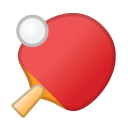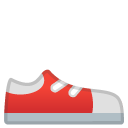Sunday, October 29, 2023
If your game is struggling WATCH THIS | Pickleball Strategy Q&A
Thursday, October 26, 2023
AI instructional Video: 5 tips for Beginners at Pickleball
 Pickleball is an inclusive sport that anyone can pick up regardless of age or skill level.
00:27
Pickleball is an inclusive sport that anyone can pick up regardless of age or skill level.
00:27  Understanding the rules like double bounce, service faults and foot faults is crucial for mastering pickleball.
02:19
Understanding the rules like double bounce, service faults and foot faults is crucial for mastering pickleball.
02:19  Choosing the right paddle involves considering core material, thickness, surface material, grip size and weight.
03:56
Choosing the right paddle involves considering core material, thickness, surface material, grip size and weight.
03:56  Mastering footwork techniques like pivoting, shuffling and shot recovery gives you a strategic edge.
05:04
Mastering footwork techniques like pivoting, shuffling and shot recovery gives you a strategic edge.
05:04  The serve is vital for gaining control and applying pressure on opponents from the start.
05:59
The serve is vital for gaining control and applying pressure on opponents from the start.
05:59  Playing alongside experienced players accelerates learning strategy, technique and tactics.
Playing alongside experienced players accelerates learning strategy, technique and tactics.Monday, October 23, 2023
5 Things I wish I knew when I started Playing Pickleball
Sunday, October 22, 2023
Paddle: The texture at the sweet spot is completely smooth
Source: Facebook Group - The Kitchen Poll
Since November 2022, I've been using the Selkirk Invikta Power Air. Selkirk Sport - We are Pickleball $250.00
I've really enjoyed playing with this paddle because of it's great combo of spin and power.However, after playing with it for 2-3 months, the texture at the sweet spot is completely smooth as compared to the gritty texture it comes with when it is brand new.
To be fair, Selkirk's customer service is top notch and have replaced it 3 times over this past year because of the issue and another time for a broken end cap.
Unfortunately, they are no longer gonna honor their 'Lifetime Warranty' which lasted less than a year- that's a short life in human years.
- 19% Lasting 2/3 months is normal wear and tear
- 52% Seek another paddle
- 8% Is this a defect? Paddle should be replaced or the purchase price refunded.
- Midweight Range: 7.7 – 8.1 oz.
- Custom weights are not available
- Grip Circumference: 4 1/4"
- Grip: Selkirk Geo Grip
- Handle Length: 5 1/4"
- Paddle Length: 16 1/2"
- Paddle Width: 7.375"
- Face: Hybrid Blend of Fiberglass and Carbon Fiber
- Core material: Polymer Honeycomb
- Core Thickness: 0.5''
- Edge Guard: Edgeless DuraEdge
Saturday, October 21, 2023
JAMES IGNATOWICH: Two-Hand Backhand Cross-Court Dink with Side-Spin
Two-Handed Backhand Dinking: Unlocking Aggressive Play
Introduction
In pickleball, mastering dinks is critical for success. While one-handed dinks allow for control, two-handed backhand dinks open up more aggressive options. In this video, a 4.0 pickleball player works with a pro James Ignatowich to develop his two-handed backhand dink technique. Ignatowich provides guidance on grip, ball contact point, spin, and strategy for maximizing this shot.
Key Points
- There are two main types of dinks - "dead" dinks for resets and aggressive dinks for offense. Dead dinks can be hit slightly higher over the net with more margin. Aggressive dinks are hit lower over the net and can be placed deeper.
- For two-handed backhand dinks, the left hand provides most of the power and control. The right hand offers support. Start by practicing strokes with just the left hand to develop confidence.
- On two-handed backhand dinks, the key is covering the left side of the ball with the left hand to impart side-spin. This is different than normal backhand dinking where you get under the ball for topspin. The side-spin creates a biting action that's tough to return.
- Mastering two-handed backhand dinks opens up the court, especially down the sideline. Since many players at the 4.0 level don't have effective backhand ATPs, these dinks can really put opponents on their heels.
- While top pros like Ben Johns succeed with one-handed backhands, the two-handed grip provides additional options for aggression on backhand dinks. The player should practice both but use the two-hander when looking to attack.
Practice Session
The player starts off working on his two-handed grip. Ignatowich emphasizes keeping the left hand locked into the paddle and letting the right hand provide support. At first the player hits the dinks too high over the net, allowing them to be attacked. After a few tries, the player starts making solid contact on the left side of the ball, creating heavy side-spin.
Ignatowich reinforces that the player needs to resist the habit of getting too far under the ball like on a topspin dink. The key is driving through the left side of the ball with the shoulders to impart side-spin. When the player connects correctly, Ignatowich struggles to even return the biting dinks.
After some good repetitions, the player begins popping the dink back up. Ignatowich reminds him to stay shoulder driven and hit the left side of the ball. The last dink of the session has perfect side-spin and lands right at the coach's feet.
Conclusion
Adding a two-handed backhand dink opens up opportunities for aggression, especially down the sideline or behind a poaching partner. While top players can succeed with one-handed dinks, the two-handed grip provides additional options. By continuing to practice this technique and focusing on the proper contact point, the player unlocks the ability to attack with his backhand dink. Mastering this shot will raise the player's game to the next level.
Pro Allyce Jones teaches how to do a “Two-handed Backhand Roll Dink”
Age is Just a Number: The Joyce Jones Story | AARP Pickleball Stories |
The Ageless Athlete: Joyce Jones' Lifelong Love for Badminton and Pickleball Introduction: At 94 years old, Joyce Jones, a resident ...

-
✅ How long pros drill vs. play (and why it matters) ✅ Our top drills for 3.0, 3.5, 4.0, and 4.5+ players ✅ The mindset and focus needed for ...
-
Analyzing the Upset: A Step-by-Step Breakdown of the 2025 PPA Carvana Mesa Cup Mixed Doubles Semifinal How Anna Bright/Dekel Bar Toppled t...
-
Port Townsend Leader August 2, 2023 Page A-17 Theft of produce sours pickleball play The Great Ice Chest Caper Pickleball Players Fall Victi...
